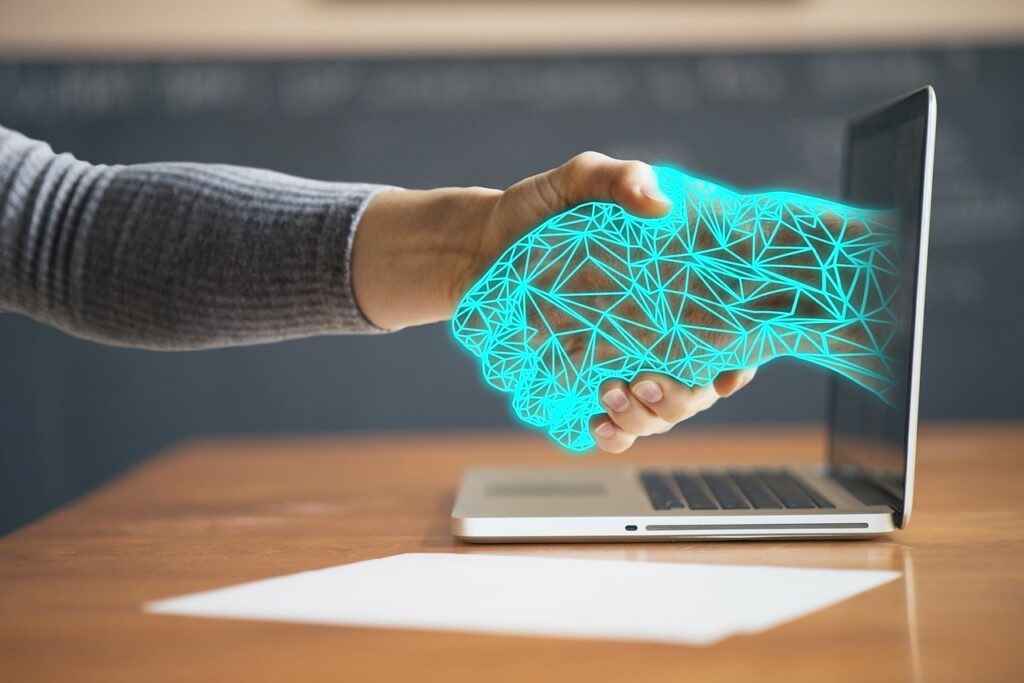Intellectual Property (IP) law, with its intricate web of patents, trademarks, and copyrights, demands a meticulous and detail-oriented approach. In the realm of legal practice, the integration of cutting-edge technologies has become a catalyst for increased efficiency and precision. This article explores the significant role of AI tools in streamlining client reporting within the domain of Intellectual Property law, shedding light on the transformative impact these tools bring to the legal landscape.
Enhancing Efficiency in Intellectual Property Data Management
In the realm of Intellectual Property law, the sheer volume of data associated with patents, trademarks, and copyrights can be overwhelming. AI tools, leveraging advanced data processing capabilities, offer a remedy to this challenge. These tools employ Machine Learning algorithms to sift through vast datasets, extracting relevant information with unprecedented speed and accuracy. This transformative capability not only expedites data management processes but also minimizes the risk of oversight, ensuring that crucial details are not buried in the complexity of intellectual property portfolios.
AI tools, particularly those utilizing Natural Language Processing (NLP), contribute significantly to the efficiency of data extraction and interpretation. NLP algorithms comprehend the nuances of language within legal documents, enabling the extraction of key information with contextual understanding. This goes beyond mere keyword recognition, allowing for a more comprehensive analysis of patents, trademarks, and copyrights. The result is a streamlined and sophisticated approach to data management that empowers legal practitioners to focus on strategic analysis rather than manual data extraction.

In the dynamic landscape of intellectual property data, the integration of AI tools marks a paradigm shift. Legal professionals find themselves equipped with tools that not only enhance efficiency but also provide a nuanced understanding of the intricate details embedded in intellectual property documentation. As we explore the nuances of AI applications in Intellectual Property law, the emphasis lies on how these tools navigate the complexities of data management, paving the way for more informed and streamlined client reporting.
Leveraging AI for Comprehensive Intellectual Property Analysis
As we delve deeper into the application of AI tools in Intellectual Property law, a notable area of impact lies in comprehensive intellectual property analysis. Traditionally, the process of analyzing patents, trademarks, and copyrights for legal reporting has been a time-intensive task, often fraught with the potential for human error. AI tools, driven by Machine Learning algorithms, revolutionize this landscape by offering a systematic and analytical approach to intellectual property analysis.
One of the key advantages of AI-powered analysis is its ability to identify patterns and correlations within intellectual property data. Machine Learning algorithms sift through vast datasets to recognize trends in patent filings, trademark registrations, and copyright portfolios. This not only provides legal practitioners with a bird’s eye view of the intellectual property landscape but also enables them to identify potential opportunities and threats for their clients. The predictive capabilities of these AI tools offer a strategic advantage in anticipating market trends and aligning intellectual property strategies accordingly.
Natural Language Processing plays a pivotal role in elevating the depth of intellectual property analysis. Traditionally, legal professionals would spend substantial time manually reviewing and interpreting complex legal language within patents and trademarks. AI-driven NLP algorithms, however, navigate through this language intricacy, extracting key insights and providing a coherent understanding of the legal nuances involved. This not only accelerates the analysis process but also ensures a more accurate interpretation of intellectual property documentation.
The integration of AI tools into comprehensive intellectual property analysis marks a departure from traditional methods, enabling legal practitioners to offer more strategic and informed advice to their clients. As we continue to unravel the layers of AI application in Intellectual Property law, the emphasis remains on how these tools not only streamline the analysis process but also enhance the depth and quality of client reporting, positioning law firms at the forefront of innovation.
Tailoring Client Reports for Precision and Relevance
One of the notable advantages of AI in client reporting lies in its ability to tailor reports with precision and relevance. Machine Learning algorithms analyze client-specific data, learning patterns, preferences, and priorities over time. This personalized approach ensures that client reports are not generic but rather customized to meet the specific needs and expectations of individual clients. By understanding client nuances, legal practitioners can provide more targeted and valuable insights, fostering a stronger attorney-client relationship.
AI tools contribute significantly to the automation of routine reporting tasks, allowing legal professionals to dedicate more time to strategic analysis and client interactions. Through automated data extraction and report generation, the risk of human error is minimized, and the efficiency of the reporting process is substantially enhanced. This streamlined approach not only saves time but also ensures that clients receive reports promptly, contributing to a more transparent and communicative attorney-client relationship.
Facilitating Data Interpretation and Decision-Making
In the realm of intellectual property, data interpretation is a critical aspect of client reporting. AI tools, equipped with advanced analytics capabilities, facilitate a deeper understanding of complex intellectual property data. These tools go beyond presenting raw data; they offer meaningful insights and trends derived from the data analysis. Legal practitioners can leverage these insights to make informed decisions and provide clients with a strategic roadmap for their intellectual property portfolios.
The integration of Natural Language Processing into client reporting enhances the interpretative capabilities of AI tools. NLP algorithms not only extract data but also interpret legal language, making the reporting more accessible to clients who may not have a legal background. This bridging of the communication gap ensures that clients can comprehend the nuances of their intellectual property reports, fostering a collaborative and informed decision-making process.
As we navigate through the transformative impact of AI on client reporting in Intellectual Property law, it becomes evident that these tools are not just enhancing efficiency but fundamentally reshaping the nature of client interactions. The intersection of personalized reporting, automated processes, and insightful data interpretation positions AI as a cornerstone in delivering value-driven legal services.
Anticipating Future Advancements in AI for Intellectual Property Law
The continuous development of Machine Learning algorithms holds the promise of refining AI tools for even more intricate tasks within Intellectual Property law. Future advancements may involve enhanced pattern recognition capabilities, allowing AI to identify evolving trends in patent filings, trademark registrations, and copyright portfolios with heightened accuracy. This foresight not only aids legal practitioners in anticipating changes in the intellectual property landscape but also empowers clients to make strategic decisions proactively.
Moreover, the integration of AI in Intellectual Property law may extend to predictive analytics, offering legal professionals the ability to forecast potential legal challenges or opportunities for clients. By analyzing historical data and case outcomes, AI tools can provide valuable insights into the probable trajectories of intellectual property disputes, enabling law firms to craft preemptive strategies and enhance their advisory role.

Embracing the Ethical Dimensions of AI in Client Reporting
Embracing the ethical dimensions of Artificial Intelligence (AI) in client reporting signifies a pivotal juncture for legal professionals navigating the dynamic landscape of technological integration. As AI tools increasingly become integral to client reporting in various legal domains, including Intellectual Property law, a conscientious approach towards ethical considerations is paramount. The foundational principles of transparency, fairness, and accountability should guide the ethical deployment of AI applications in the legal realm.
In the realm of Intellectual Property law, where sensitive information and proprietary data are commonplace, establishing clear guidelines becomes imperative. Ethical considerations extend to data privacy, necessitating stringent measures to safeguard the confidentiality of client information. Legal practitioners must ensure that AI tools adhere to ethical standards in handling vast datasets, preventing unauthorized access, and maintaining the integrity of client data.
The responsible handling of sensitive information goes hand in hand with the ethical dimension of client confidentiality. Legal professionals employing AI in client reporting must be vigilant in safeguarding privileged information. This includes implementing robust cybersecurity measures, encryption protocols, and access controls to mitigate the risks associated with potential data breaches, ultimately safeguarding the trust placed in legal practitioners by their clients.
Striking a balance between harnessing the benefits of AI and upholding ethical standards is crucial for maintaining the trust essential to the attorney-client relationship. Clients entrust legal professionals with sensitive information, and the responsible use of AI ensures that this trust is upheld. The ethical deployment of AI in client reporting becomes a linchpin in cultivating a relationship built on transparency, integrity, and the assurance that technological advancements serve the best interests of the clients and the ethical fabric of legal practice.
Cultivating a Synergistic Relationship between AI and Legal Expertise
In contemplating the future trajectory of AI in Intellectual Property law, it is essential to view its evolution not as a replacement for legal expertise but as a formidable ally that enhances the provision of legal services. The symbiotic relationship between AI tools and legal professionals is poised for further development, with AI acting as a catalyst for increased efficiency, precision, and innovation in client reporting.
As AI becomes an integral component of legal practice, legal professionals must recognize that the technology augments rather than replaces their expertise. The synergy between AI tools and legal practitioners holds the potential to revolutionize client reporting in Intellectual Property law. AI’s analytical capabilities can process vast datasets, extract patterns, and provide valuable insights, empowering legal professionals to make more informed decisions. It is this collaboration between human intuition and machine-driven analysis that defines the future landscape of legal practice.
In the ongoing evolution of AI within Intellectual Property law, the collaborative synergy between technology and legal expertise becomes increasingly vital. Recognizing AI as a powerful ally rather than a replacement underscores the potential for innovation and advancement in client reporting. The integration of AI is not a static event; it represents an ongoing journey characterized by continuous refinement and adaptation.
As legal professionals navigate this transformative landscape, fostering a harmonious relationship with AI involves ongoing professional development. Legal practitioners must cultivate a nuanced understanding of AI capabilities, keeping abreast of technological advancements, and refining their skills to effectively collaborate with AI tools. This commitment to continuous learning ensures that legal professionals remain at the forefront of innovation, maximizing the potential benefits that AI brings to client reporting.
The promise of more sophisticated AI applications in Intellectual Property law heralds an era where data analytics, pattern recognition, and predictive capabilities become even more refined. Ethical considerations will play an increasingly pivotal role, necessitating the establishment of clear guidelines for the responsible use of AI. This commitment to ethical standards aligns with the overarching goal of enhancing client trust and transparency, reinforcing the collaborative nature of the relationship between AI and legal expertise.
Looking forward, the emphasis on cultivating a future where AI augments the capabilities of legal professionals is intertwined with the concept of delivering unparalleled insights and value to clients. The client-centric approach facilitated by AI tools ensures that legal practitioners can provide more strategic, informed, and tailored advice. It is through this collaborative evolution that the legal profession stands poised to redefine the standards of excellence in client reporting within the dynamic realm of Intellectual Property law.

Conclusion
In conclusion, the integration of AI in client reporting within Intellectual Property law represents a transformative journey. This evolution goes beyond mere technological adoption; it reshapes the dynamics of legal practice. Looking ahead, the promise lies in the development of more sophisticated AI applications, coupled with a heightened awareness of ethical considerations. The emphasis remains on cultivating a future where AI serves as a force multiplier, amplifying the capabilities of legal professionals and delivering unparalleled insights and value to clients in the intricate realm of Intellectual Property law. As we navigate this evolving landscape, the collective goal is to harness the synergistic potential of AI and legal expertise for the benefit of clients and the continued advancement of the legal profession.

